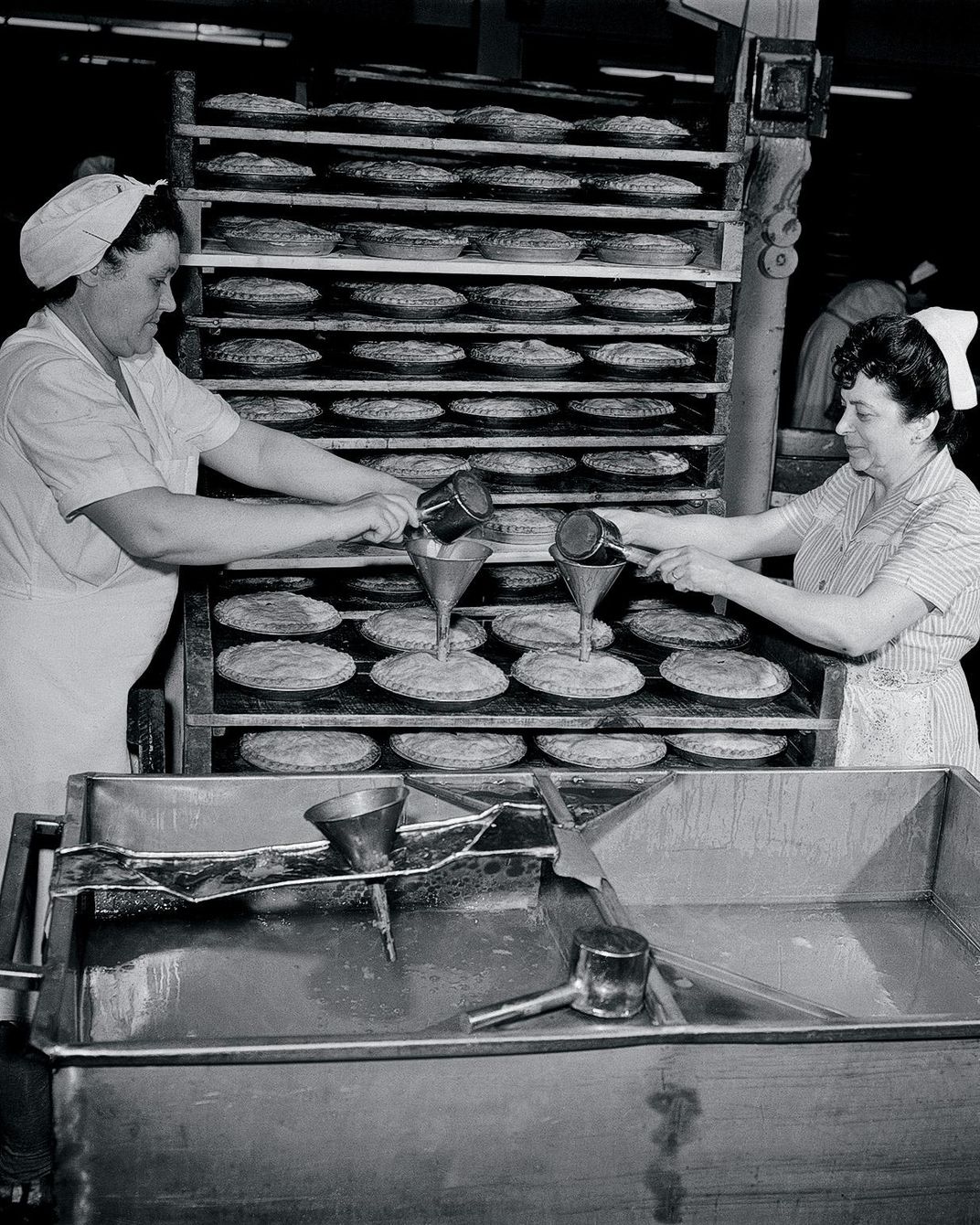Why Americans Love Their Apple Pie
How did a humble dessert become a recipe for democracy?
/https://tf-cmsv2-smithsonianmag-media.s3.amazonaws.com/filer/2f/7e/2f7e4947-3377-444b-a706-c7d482411540/sept19_pro_applepieopener.jpg)
In the early 1900s, the United States was at war—over pie. On one side were the traditionalists, who saw pie as “an article of necessity in every household as much as the bed and cook stove,” according to a Chicago Daily Tribune report in 1899. On the other side were the food reformers, who wanted to break this unhealthy and corrupting habit. “Pie really is an American evil,” Kate Masterson wrote in the New York Times in 1902. It is an “unmoral food,” she warned, offering advice for spotting pie eaters: They have “sallow complexions” and “lusterless or unnaturally bright eyes” and, of course, they “are all dyspeptic.” “No great man,” she wrote, “was ever fond of pie.”
Those were fighting words. Pie eaters traced their love of the dish back to the founding fathers—a particular pumpkin pie recipe credited to the Adams family was said by the Kansas City Star to have “raised a well-fed race of jurists, scholars, orators and Presidents”—and still further back to the Massachusetts Bay Colony. The pie tradition of the New England colonies had come from old England with the settlers, who transformed the savory kidney and mincemeat pies of the British Isles into sweet pies filled with fruits that grew well along the Atlantic Coast. The crusts changed, too. They were lighter and flakier because lard from pigs was more abundant in the Colonies than tallow from cows. (Sugar and spices were imported to the Colonies from Britain, which controlled most trade.) In 1892, Rudyard Kipling described the Northeast as “the great American pie belt,” a title that traditionalists claimed proudly. As the population moved west, the pie recipes did, too.
By the turn of the century, Americans were eating more apple pie than any other variety. Apples, first brought to the continent by the colonists, grew well across large swaths of the country and could be stored through the winter, unlike most other fresh fruits. The phrase “as American as apple pie” would not be coined until a 1924 advertisement in the Gettysburg, Pennsylvania, Times for men’s suits that bucked English fashion trends. But the idea was already so deeply ingrained that pie eating became a way for the country’s newest arrivals—now mainly from Central, Southern and Eastern Europe—to assimilate. “Every American is born with an appetite for pie,” a New York newspaper opined in 1895. As for the immigrant, the paper wrote, “his Americanism, in fact, may be tested in his taste for pie.”

To the growing food reform movement, though, pie was a remnant of our rustic past, before the United States had taken its place on the international stage. Advocates such as Harvey Wiley—now best known for his support of the Pure Food and Drug Act of 1906—called for a simpler and lighter diet, focused on Northern European cuisines. Pie eaters (code for immigrants and the lower classes, in the language of the food reformers) were a drag on society. Elizabeth Fulton, a home economist at Kansas State Normal School, believed pie eating, like alcoholism, was a cause of divorce. She implored homemakers to “return to fresh fruit.”
The reformers might have won the battle, too, if not for the outbreak of World War I. Now pie eating was patriotic. “As soon as an American boy goes to any foreign country he at once begins to languish for American pie,” a Boston Daily Globe editorial professed in 1918. The craving, the Globe wrote, was a hunger for democracy itself: “Patrick Henry might as well have said ‘Give me pie or give me death’ because what is liberty without pie?”
It maintained its symbolic significance into the Cold War. When Soviet Premier Nikita Khrushchev visited New York City in the fall of 1960 to address the United Nations, a woman named Virginia McCleary sent a package from her Texas home to Khrushchev’s residence on Park Avenue. The bomb squad was called to examine the five-pound delivery. Inside was an apple pie. The pastry, McCleary said, would introduce Khrushchev to American values: “The Communist pie is nothing but crust. In America we have an upper crust and a lower crust but it’s what’s between—the middle class—that gives the real flavor.”
Today apple pie tastes like nostalgia, as in the unforgettable (try as one might) 1974 General Motors jingle “Baseball, hot dogs, apple pie and Chevrolet, they go together in the good ol’ USA.” The company revived it in 2012 as the nation emerged from the financial crisis and the lingering menace of 9/11.
Despite the current fad for locally grown fresh foods that are low carb, keto-friendly and gluten-free, we still have a soft spot for this classic dessert: About 186 million pies of all sorts are purchased every year at the nation’s grocery stores alone. The ingredients have evolved over the years in step with waves of immigrants—think mango, Asian pear and banana split—but America’s undisputed favorite is still apple pie.
The Rise and Fall of Red Delicious
A wildly popular but much-maligned fruit is finally on the wane
Research by Matthew Browne